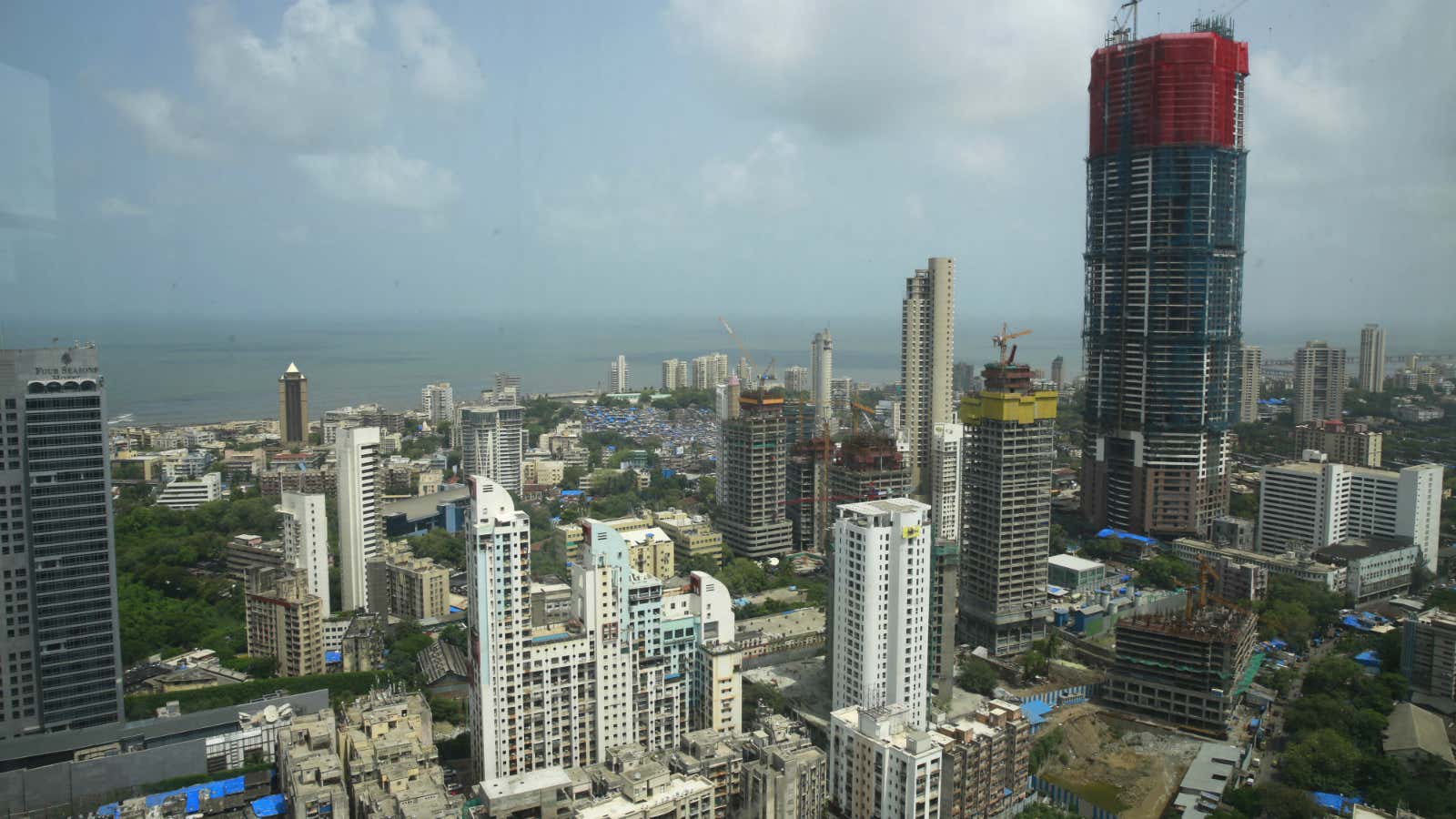In a recent media interaction, finance minister Arun Jaitley urged the Reserve Bank of India (RBI) to cut the interest rates. A lower rate would help fuel growth in India’s realty sector, which is suffering from a severe demand slowdown.
And he’s not wrong. There are 750,000 unsold apartments in seven cities alone, including those in Mumbai, the National Capital Region (NCR) and Bengaluru. RBI governor Raghuram Rajan obliged the finance minister with a 50 basis points (bps) rate cut.
Will that be enough to revive India’s housing demand? Will it save the realty sector from crashing? Why is India’s housing sector staring at an imminent crash?
A majority of demand for homes in India is in the affordable segment. However, most developers are coming out with high priced premium and luxury apartments that most buyers can’t afford. Over 69% of the unsold homes in Mumbai are priced above Rs1 crore or more. The result is huge unsold inventories.
The inventory pile-up is so huge that it would take at least five years in the NCR and three years in Mumbai to sell them off, according to a report by Knight Frank India, a property consultancy. Rajan is right when he says the salaried class can’t afford to buy flats in India’s top cities. Obviously, builders will face shortage of buyers.
Secondly, India’s home market is driven by investors rather than end users. Thus, if homes prices continue to remain flat for long, investors will start losing interest, as they are in the market for a good return on the money invested.
Return comes in two ways—capital gains from the appreciation in the home prices or rental income. At present, apartment prices are either stagnant or witnessing a mild correction in most parts of India, and more so in the NCR.
When it comes to rental income, a typical two-bedroom, 1,000 square feet apartment in the Mumbai suburbs of Andheri East or Malad with a quoted price of anything between Rs1.5 crore and Rs2.5 crore will generate an annual rental income of anything between Rs3 lakh and Rs6 lakh. That is 2% to 2.4% of the capital value of the apartment.
Expenses on account of property taxes, society maintenance charges and the normal wear and tear of the apartment devour around 20% to 30% of the rental income depending upon the age and location of apartment building. Then, you also have to consider capital gains taxes in case you decide to sell.
Critics will say that I’m not accounting for the role of black money. That’s true.
However, even people with black money who’ve invested in the property market do look for positive returns. If rent is insignificant compared to the property price, and capital appreciation is not happening—which is the reality whether builders accept it or not—investors will soon lose interest.
Investors have already started to desert some realty markets like Noida. As a result, prices are lower by almost 30% from the peak of December 2012. (The best way to verify price correction is check prices in the resale market.)
Can the RBI rate cut of 50 bps revive sentiment in the housing sector and bring back buyers as EMIs (equated monthly instalments) would now be lower?
I don’t think so.
It’s important to realise that buyers have to pay both the principal (apartment price) and interest. A 50 bps rate cut on a Rs50 lakh loan with an interest rate of 10% for 20 years means that the EMI will drop from Rs48,251 to Rs46,607.
Will you buy something that cost you Rs50 lakh just because your EMI is now down by Rs1,644 a month? Most people will not, especially when you can rent that Rs50 lakh apartment for just Rs10,000 or Rs12,000 a month.
It doesn’t make sense to buy a two-bedroom apartment for Rs2 crore and enslave yourself for life in a bad job or with a bad boss. Why buy when you can rent it out for just Rs50,000 a month at the most. I stay in a house that is priced at Rs1.5 crore, but I pay only Rs32,000 a month as rent when home loan interest rate is 10%. Why can’t you?
Even if you want to buy your dream home, what’s the hurry? Prices are not moving up so it makes sense to wait till then, stay in a rented accommodation of your choice, at least till the housing regulator becomes a reality. There are so many unoccupied apartments to choose from irrespective of what your local brokers say about availability.
My advice: please don’t go for under-construction apartments, even if you think that the payment plan offered by builders is too good to refuse. For instance, pay 20% now and the balance 80% on possession. Well, 20% of Rs2 crore is Rs40 lakh. And at 10% per year, your interest outgo would be Rs4 lakh annually, which is more than sufficient to rent a decent 2 BHK apartment.
Plus your money remains safe that you can use to buy a ready to move in apartment when prices are reasonable.
If you still want to fall into the 20:80 trap, here’s the fact: builders are delaying handing over the possession by two to six years. If that’s the case, you may have to pay both the rent and EMIs.
Besides, what’s the guarantee that your under-construction project will ever be completed, given the over-leveraged conditions of real estate companies, the nexus between builders, babus and politicians, and no housing regulator to police the errant builders.
Can you fight a builder who doesn’t intend to keep his words? You can’t. But why should you when you have the option of staying in a rented accommodation?
A version of this post first appeared on LinkedIn. We welcome your comments at ideas.india@qz.com.
